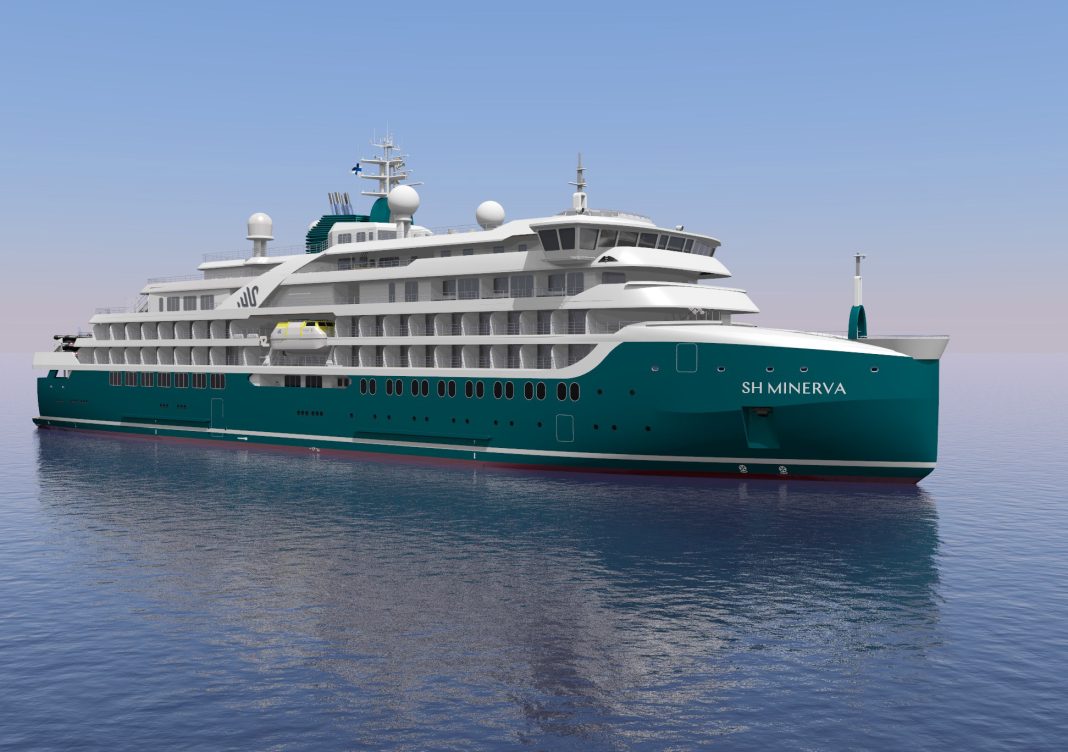The keel laying ceremony for the first of Swan Hellenic’s two new ice-class expedition cruise ships took place in Helsinki on 24 September 2020.
The first 347-ton block of the ship, newly arrived from Klaipeda, where it had been outfitted and painted, was set on the keel over coins to bring good luck in accordance with ancient maritime custom.
Again demonstrating respect for time-honoured traditions, Swan Hellenic announced during the ceremony that the ship would be christened SH Minerva in honour of the iconic company’s first purpose-built vessel, named after the Roman goddess of creativity and wisdom.
Swan Hellenic CEO Andrea Zito declared there could be no more fitting way for the relaunched company to take Swan Hellenic’s pioneering spirit back onto the waves.
The ceremony took place in the presence of Helsinki Shipyard Inc. CEO Carl-Gustasf Rotkirch and Project Manager Jonas Packalén, together with Swan Hellenic CEO Andrea Zito, participating via video link due to the unprecedented circumstances of the Covid-19 pandemic.
The elegant new ship represents the next generation of polar expedition vessels, designed for worldwide cruising with a strong focus on high-latitude areas.
SH Minerva will feature a 4.6-megawatt diesel-electric hybrid propulsion system with selective catalytic reduction, 3-megawatt max. battery package and PC5 ice-strengthened hull.
At 113m in length, the 10,500-ton vessel has been specially designed to explore the most inspiring and inaccessible places on the planet.
Providing spacious five-star accommodation for 152 guests in 76 spacious cabins and suites, the vast majority with large balconies, SH Minerva will be operated by an onboard team of 120 to provide the highest levels of personal service.
Commenting on the special challenges of these innovative ships, Project Manager Jonas Packalén explained: “New build 516 and her sister NB 517 are designed for extreme weather conditions, from polar areas with quite heavy ice conditions to tropical regions. And they are naturally designed to respect the sensitive ecosystems of the regions where they’re going to sail.”



